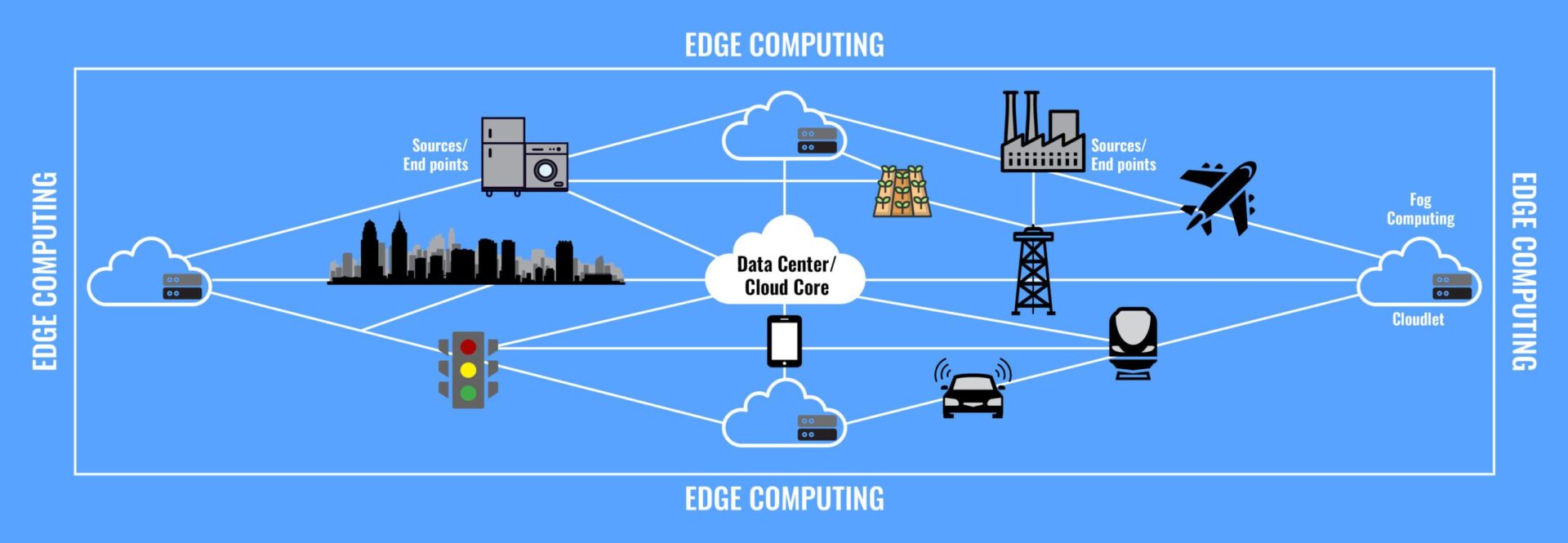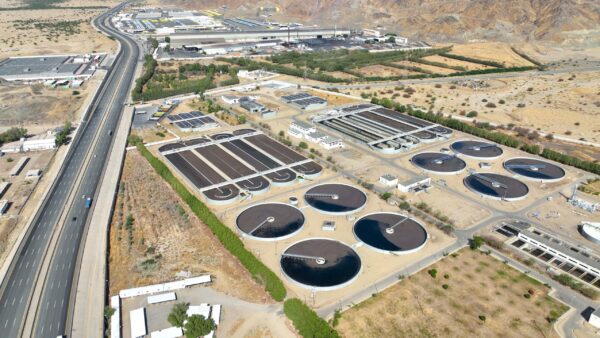

By Rob Nash-Boulden, Director Data Centers, Hill International, Inc.
Back in 2017, I helped write a paper titled “Edge Computing: The Calm Before the Storm?” The paper included a survey and analysis of current trends towards Edge computing, which we defined as distributed computing that delivers data storage and processing closer to where the data is used—effectively, on the “edge.”
Edges, Clouds, and Gravity
Edge computing as a concept dates to the turn of the century to describe content delivery network servers. Since then, Edge has come to describe the processing, analyzing, and application of knowledge from data collected at the source, as opposed to data transmitted to a core processing unit. Edge computing can apply to any number of scenarios—the Internet of Things is an obvious example, as are peer-to-peer networks, mobile devices connected wirelessly, and, of course, entire or partial urban utility and infrastructure networks.
Edge computing also applies to the data centers themselves, where the data processing occurs in a fixed location and the network extends both wirelessly and through fiber and effectively, in concentric rings with the servers themselves becoming a kind of data neutron star, generating what amounts to “data gravity.” This can true of a single data center, but also of an entire region, like the concentration of data center activity in Northern Virginia.
Given this definition, Edge computing in the U.S. appeared in 2017 ready to join the list of everyday technological terms, from cloud computing to peer-to-peer. Did the storm we predicted break?
The answer is yes, but like so many technological trends instead of thunder and lightning followed by an ensuing downpour we’ve had several years of steady Edge showers: an evolution, not a revolution.
Today, the evolution of data networks towards Edge computing continues, both in expected and unexpected ways. Self-driving vehicles are closer and closer to reality, although predictions of fully automated freight and cargo systems were perhaps premature. For transportation infrastructure, however, Edge is a reality as Intelligent Transportation Systems (ITS), on-site airport data centers, and ship to shore port systems are the norm. The same can be said for media and content providers, with online gaming and content providers expanding delivery network efficiency and geographic reach through value-added and interactive services.
Edge in the Built Environment
In the built environment, Edge continues to evolve in important ways. For owners, agencies, and utilities, Edge provides new opportunities to realize efficiencies, improvements, and cost savings in how they provide services to residents, end-users, and other stakeholders. Edge can help achieve this through extended Intelligent Building Systems (IBS), with a Universal Connectivity Grid (UCG) connecting the IBS out into the cityscape itself.
As the number of data sensors and sources grow with a city—including individuals with their devices and monitors, traffic systems, healthcare, utilities, security, etc., storing and analyzing data centrally becomes less feasible. A system based on Edge computing, however, allows the information needed to meet requests and improve service delivery to be passed back through the network. Edge computing also reduces the latency delays inherent in cloud computing, which is critical for situations where action is required quickly, such dispatching a first responder or addressing a traffic snarl.
In addition, Edge computing enables geographic precision – information relevant to a particular street, block, or suburb can be shared instantaneously, potentially even by floor or room. For example, in the event of a local crime, edge computing facilities in a neighborhood can be fed an image or video of the perpetrator which video analytics can search for and link to police systems.
Is Edgy Smart for Cities?
Traditionally, municipal and other public owners lag the private sector in terms of adopting new technologies and innovations. In the case of Edge, however, governments and other public sector agencies don’t necessarily have an apples-to-apples comparison with, say, a corporate campus or manufacturing complex. A key enabler for Edge computing is the roll out of 5G, for example, which is appearing on city streets alongside connectivity improvements in manufacturing. Similarly, according to Cisco, a single smart building generates some 275 GB of data a day, of which only 1% is captured, as compared to a factory, which might generate 2 PB, of which only 0.2% is captured, and a smart grid might generate a seemingly miniscule 5 GB of data a day, of which only 1% is captured. What would it mean for a city capture this data in a meaningful way? Is a holistic case of receiving and realizing actionable data beneficial?
Yes, potentially—again, Edge is an evolution, not a revolution. Cities and agencies looking for a silver bullet from Edge projects will be disappointed. But, if planned and executed correctly, Edge can result in long-term improvements for utilities and other services. Carrier Smart City Networks, in their paper “Smart is the New Green,” breaks out some the quantifiable and qualifiable benefits of widespread IBS use feeding data into a UCG as follows, which I have expanded and elaborated on based on my own experience with Edge in the urban environment.
How to Realize an Edge
As Edge continues to evolve, there are several ways cities and utilities can prepare their networks to take advantage of the opportunities the technologies present. Hill International, Inc., a program, project, and construction management firm supporting municipalities, agencies, and other public owners across the U.S., is already seeing the advantages of Edge computing in ITS and IBS. Based my own and Hill’s experience, we recommend our clients:
Living on the Edge
Cities and agencies often see the likely benefits of using Edge, and find the technical obstacles and up-front investment surmountable, only to realize there are still many “unknown-unknowns” associated with Edge. As noted, using Edge to better manage public infrastructure is not an area where public owners can look to the private sector for an apples-to-apples comparison. The legal and ethical challenges of Edge computing cited back in 2017 remain relevant today:
Leveraging the Edge
When my colleagues and I delivered our paper in 2017, a point of emphasis was to watch where investments in Edge were coming from. Investment in data centers was an obvious example, and the continued growth in the data center market is proof that Edge has a foundation in those places where data gravity is strongest, especially as the pandemic has dragged on. In the U.S., at least, this means many urban areas are well positioned to realize the benefits of Edge computing—provided they identify, design, and manage their projects well.
Ultimately, though, Edge is about networks, not data centers. Edge presents us with the question of how we will use data, rather than how we will consume data. Future investments to watch for are in the algorithms that will make the best use of Edge, whether mobile to mobile, peer to peer, or app to app. The data center, then, will serve as the utility providing a resource, and not providing a product.
For cities, partnering is key to realizing the benefits of Edge computing. Decision makers need to find service providers who can take the public’s perspective and provide the honest and open feedback that leads to good decision making. This is true of the partners pulling the fiber, those tearing up the asphalt and laying track, those building the homes and businesses, and those overseeing the entire process, step-by-step.
In addition, cities need to be realistic and patient in realizing the benefits of Edge systems. A single toll road enveloped in a strong ITS will still experience bottlenecks and accidents, under the right (wrong) circumstances. Scaling up from such a relatively simple system to a grid or a block will take an exponentially greater spend in terms of resources, commitment, and time.
The parallels between cities and their “mission” and the leverage Edge computing can deliver, however, are striking. Cities provide the cultural, economic, and social “gravity” for millions of people, whether learning, working, or playing. City governments and agencies, along with utilities, manage this gravity in a variety of ways. Similarly, Edge needs its own data gravity to succeed in any meaningful, quantifiable way. Cities that realize how to take advantage of this alignment will enjoy a true, long-term advantage in how they shape the experience of their residents, businesses, and other stakeholders.
Share

June 23, 2025 | Articles
Jeffrey Hurley Joins Hill’s Northern California Rail Practice

June 23, 2025 | Articles
Ready, Set, Grow: First VP Chad Koelling Takes Charge of Hill’s Mountain West Region

June 8, 2025 | Articles
PMO in Saudi Arabia: The Holistic Approach to Realizing a National Mega-Portfolio

June 1, 2025 | Articles

May 26, 2025 | Articles

May 12, 2025 | Articles
Keeping Your Water/Wastewater Programs Flowing with Public Relations

April 27, 2025 | Articles
Oiling the Machine: Steps to Successful Permitting on Infrastructure Megaprojects

April 20, 2025 | Articles
Sustainable Scaling: Solutions for Managing Risk on Europe’s Data Center Projects